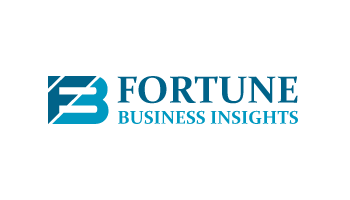Synthetic rubber market forecast at $41.7 billion by 2029
Pune, India – The global synthetic rubber market size was valued at USD 28.89 billion in 2021. The market is projected to grow from USD 29.86 billion in 2022 to USD 41.73 billion by 2029, exhibiting a CAGR of 4.9% during the forecast period according to Fortune Business Insights. The global COVID-19 pandemic has been unprecedented and staggering, with experiencing lower-than-anticipated demand across all regions compared to pre-pandemic levels. Based on our analysis, the global market exhibited a decline of 8.0% in 2020 as compared to 2019.
Synthetic rubber is a manmade rubber or artificial elastomer. It is synthesized using raw materials including coal, oil, natural gas, and acetylene. The product offers numerous advantageous properties, such as recyclability, higher tensile strength, and resistance to swelling and abrasion. The rising research and development and growing product advancement by several manufacturers in the rubber market will surge the product demand. The rapid growth rate in aerospace, automotive, and construction, coupled with the increasing rubber demand from the tire and electronic applications, will contribute to fueling the market growth during the forecast timeline.
The automotive industry has been severely affected by the COVID-19 pandemic. The movement of man and material alike has been impacted while the supply chain of synthetic rubber was restricted. Also, the pandemic caused the closure of assembly plants in the U.S., large-scale manufacturing interruptions across Europe, and Chinese parts exports. Moreover, after the early disturbances in supply and manufacturing, the automotive industry is undergoing a demand shock with an undefined recovery timeline due to shelter-in-place rules; however, governments in these countries are trying to bring their industries back on track resulting in the recovery of the automotive industry and the global market in the next couple of years.
Rising Demand for Manmade Rubber over Natural Rubber is a Prominent Trend The growing demand for manmade rubber over natural rubber will contribute to the market growth. The demand is attributed to its suitability for use in environments exposed to chemicals, greases, oils, high temperatures, oxidizing compounds, and other extreme conditions.
The rising demand for synthetic rubber from the automotive industry will boost the market growth. Properties such as abrasion and temperature resistance make artificial rubber a preferred choice in the automotive industry. The artificial rubber offers excellent anti-slip property that enhances its usage in vehicle pedals and flooring mats inside the vehicle chamber. It is highly utilized in tire applications, such as flooring, door & window profiles, hoses, O-rings & gaskets, and belts. Moreover, the increasing demand for automobiles globally is expected to surge the product consumption, primarily associated with the adoption of rubber products in the manufacture of different bikes and cars. The rapid growth in the automobile industry, coupled with increasing research & development activities, will surge the product demand during the forecast period.
Hazardous impacts of the product restrict its adoption in various applications. During the vulcanization of synthetic rubber, the soot of carbon particles is produced. It causes several environmental problems, including haze and the acidification of lakes and rivers. Also, soot inhalation can lead to a wide array of serious health issues such as respiratory issues, bronchitis, shortness of breath, stroke, asthma, cancer, heart attack, and premature death. These are some factors that may restrain product adoption and hamper market growth.
Based on type, the market is segmented into styrene butadiene rubber, nitrile rubber, polybutadiene rubber, butyl rubber, and others. Styrene butadiene rubber (SBR) is the leading segment and accounted for the largest market share. The growth is attributed to its cost-effective properties and preference over natural rubber. The high product consumption can be seen in the insulation of wire and cabling, belting, roll coverings, cutting board, and haul-off pads. Polybutadiene rubber is the second leading segment in the global market. The product finds its major adoption in tire manufacturing.

